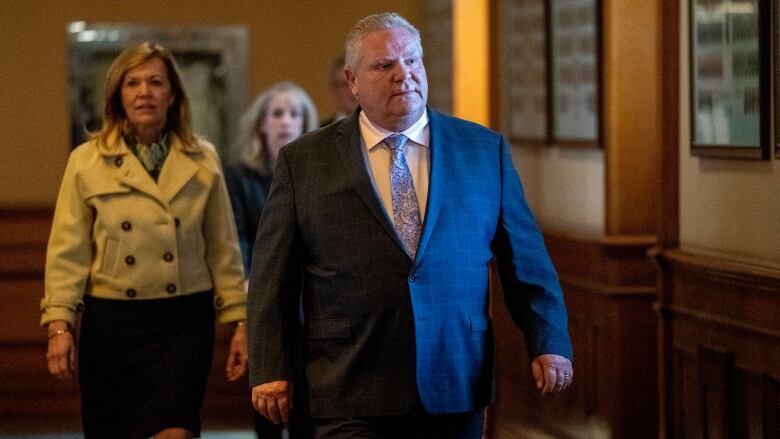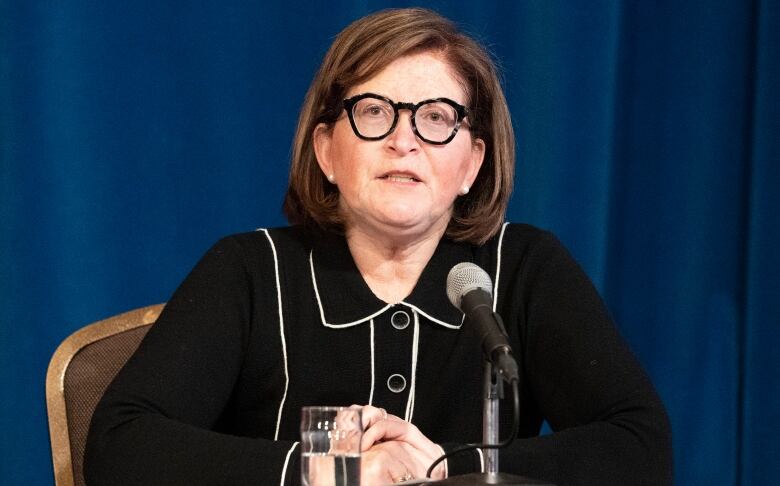Ontario's new COVID-19 modelling offers hope, but no clear picture of when restrictions will ease
'If we take our foot off the brake too soon, we'll land ourselves back in the soup'

New modelling of COVID-19's future in Ontario offers some light at the end of the tunnel, but doesn't appear to mean imminent changes to the province's restrictions on businesses and public gatherings.
The new projections suggest the rate of infections across the province is in line with Ontario's best-case scenario, suggesting physical distancing measures have generally worked.
However, the scenario in long-term care facilities ismuch worse than hoped, with 367 deaths among residents so far, according to information published by the province Monday. That's a key part of why the province isn't poised to declarevictory over COVID-19.
"Absolutely no way is this over;we're in the middle of this battle," Premier Doug Ford told a news conference Monday after the modelling was released. "Nothing's going to change until we see the curve continue to flattenor go down."
The province is working on what Ford calls "a framework for a gradual, measured and safe reopening of our province based on the data we are seeing today."

The economy will be turned back on, but "eventually methodically and slowly,"said Ford.
"We want to make sure that we give people hope," he added, urgingpeople to "hang in there" for a few weeks. He declined to indicate how many weeks it will take before changes can happen.
The message from Ontario's public health officials was similar.Asked when life can start to get back to normal, associate chief medical officer of health Dr. Barbara Yaffe replied, "Unfortunately there is no clear answer."
In presenting the projections to a news briefingMonday, Yaffesaidrestrictions will only be lifted through a phased-in approach, and each step will need to be carefully monitored for any signs that the spread of the virus is increasing
"When we do start to lift some of the measures, it will not be a light switch on-off. It will be very gradual," Yaffe said.
Ontario'sprevious projections, released April 3, suggested anywhere from 3,000 to 15,000 people coulddie from COVID-19 in the province during the pandemic, and forecast 1,600 deaths this month alone. The death toll as ofMonday morning stood at 613, according to data from local public health units trackedby CBC News.

Since those projections were released, Ontario lengthened its list of businesses to be closed, extended the state of emergency for another 28 days and expanded testing for the novel coronavirus to 8,000 tests per day.
Hospitals also added hundreds of extra ventilators, upping the capacity of intensive care units to cope with a possible surge in patients. But after climbing steadily through the first week of April, the number of confirmed cases of COVID-19 in ICUsacross the province peaked on April 9 at 264. That number has since levelled off, averaging 249 daily for the past week.
"The implication is that our public health measures are working, and we need to keep them working," said Matt Anderson, chief executive of Ontario Health, the recently created provincial agency that co-ordinates the health system.
Anderson saidactions by the people of Ontario in complying with physical distancing measures are key to the success so far.
"You've made a difference," Anderson said during the televised briefing. "You've been very successful in helping us to control the spread."
David Fisman, a professor of epidemiology at the Dalla Lana School of Public Health at the University of Toronto, said he thinks Ontario will be on "the downward side of the curve" in about two weeks.
"Then the conversation is going to shift to, 'How do we open the economy back up and how do to we open society back up?'" Fisman said in an interview Monday. "You can answer that question in one word: carefully."
Ontario's current measures for preventing infections equate to having "our foot on the brake pedal really hard," saidFisman.
"If you take your foot right off the brake pedal, you go right back to early March in terms of how this is transmitting," he added.
"If we take our foot off the brake too soon, we'll land ourselves back in the soup and have to do the whole thingall over again."













_(720p).jpg)


 OFFICIAL HD MUSIC VIDEO.jpg)
.jpg)



























































































